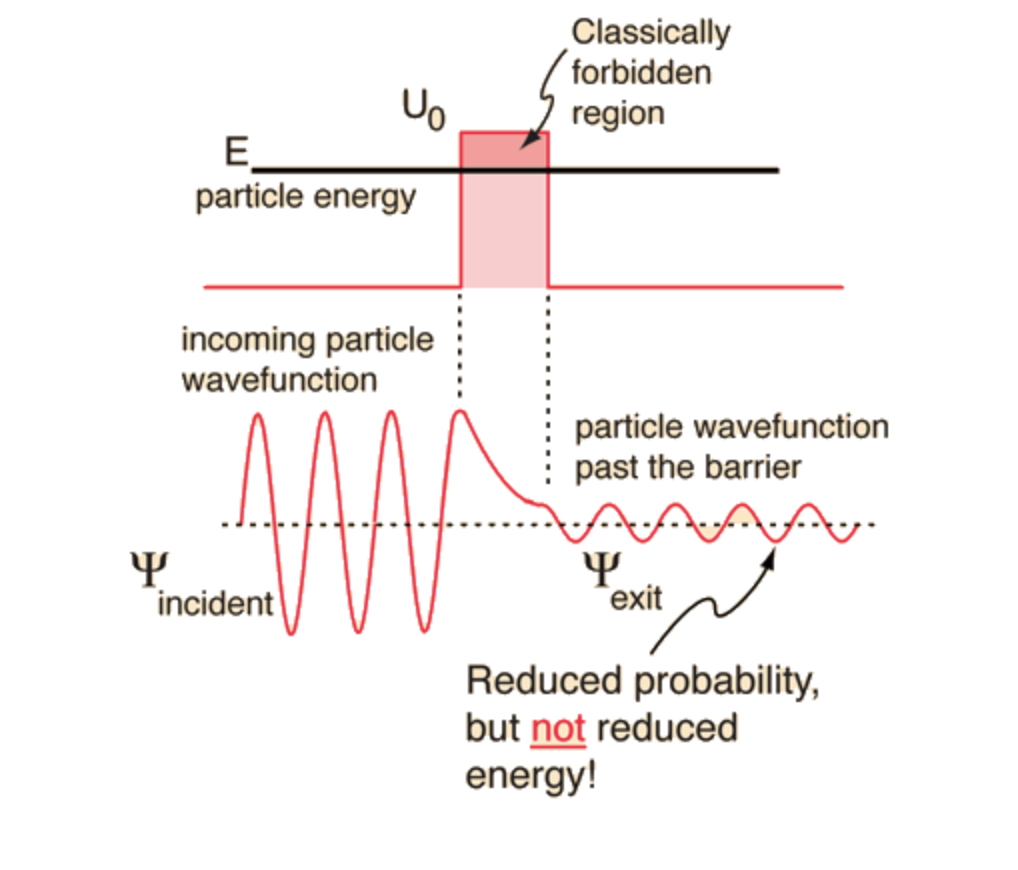Quantum tunneling occurs when a particle encounters a potential barrier that it classically shouldn’t be able to overcome due to insufficient energy. However, because the particle’s wavefunction spreads out over the barrier, well, there is a small probability that the particle can “tunnel” through and appear on the other side.
Nuclear Fusion in Stars:
The Sun and most stars fuse protons into helium nuclei, releasing energy. However, the protons do not have enough energy to overcome their mutual electrostatic repulsion under normal conditions. Quantum tunneling allows a small fraction of protons to tunnel through the repulsive barrier. When scaled up to vast amounts of hydrogen in stars, this process produces enough energy to sustain nuclear fusion, providing the light and heat necessary to support life on Earth.
Scanning Tunneling Microscopes (STM):
STMs use an extremely sharp tip, often just one atom thick, to scan the surface of a material. A voltage is applied between the tip and the material, allowing electrons to tunnel through the potential barrier (the air gap) from the material’s surface to the tip. By measuring the tunneling current at different distances, the microscope can map the positions of individual atoms on the material’s surface with remarkable precision.
Semiconductors/Transistors/Diodes:
Quantum tunneling is a fundamental principle in modern electronics. It is used in the design of semiconductors, transistors, and diodes, allowing devices to be small and efficient.
Photon Tunneling Experiments:
Experiments have demonstrated that photons can tunnel through barriers, and intriguingly, tunneling photons appear to arrive faster than photons traveling through free space?! This phenomenon does not violate the speed of light limit… no energy or useful information is transmitted faster than light. Instead, the wavefunction of the photons allows them to “rematerialize” on the other side of the barrier faster than expected, creating the illusion of faster-than-light travel.
